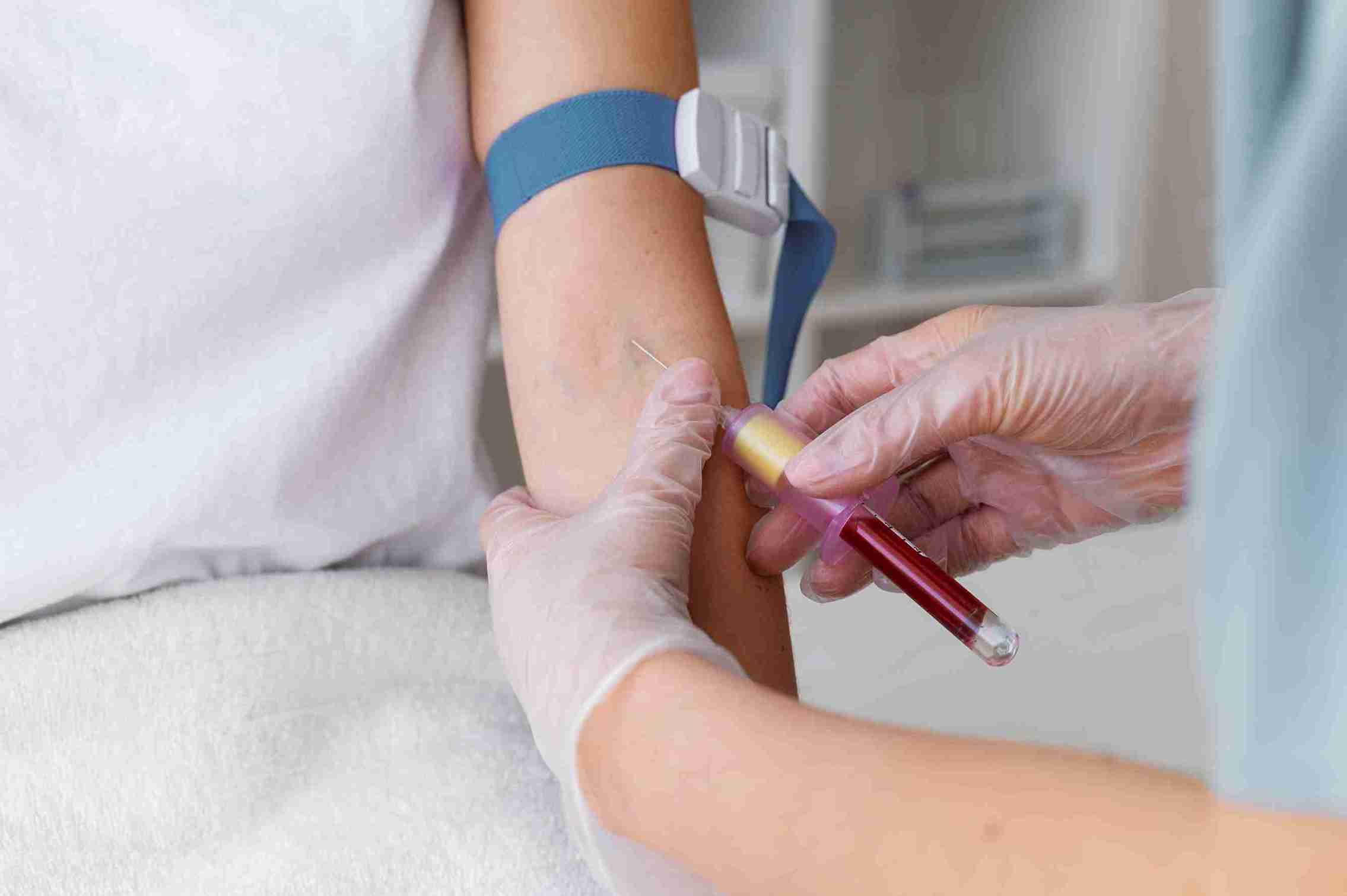
The erythrocyte sedimentation rate, or ESR, is a simple but vital blood test that helps to point towards inflammation in the body. It does not point towards a disease itself, but it is an indicator that something is wrong inside. Surprisingly, naturally, women have higher ESR than men on account of physiological as well as hormonal factors. However, if figures rise substantially over the norm, then it is likely that something is medically wrong.
In this article, we’ll explore why ESR is high in females, the typical ESR normal range in females, what symptoms to look for, and how to manage it effectively.

ESR (Erythrocyte Sedimentation Rate) is a non-specific laboratory test used to detect inflammation in the body. ESR is the rate of settling of red blood cells at the bottom of a test tube within an hour. Red cells settle slowly in normal blood. When there is inflammation or abnormal proteins, they group and fall quickly.
Because ESR is not a specific test, it doesn't diagnose a particular disease. It's most commonly utilised in conjunction with other blood markers to assist in assessing conditions like infections, autoimmune diseases, and chronic inflammation.
It should be within the normal range to interpret. The ESR for females is also mildly different by age group:
● Women younger than 50 years: 0–20 mm/hr
● Women older than 50 years: 0–30 mm/hr
Some physiological reasons, like age, hormonal status, and menstruation, can cause ESR to elevate mildly, but it is not a clear indication of a disease. Therefore, physicians take diagnostic clues from the complete clinical presentation before any diagnosis.
Being aware of the ESR normal range in females helps to prevent unnecessary panic and ensures that mild increases are interpreted in context.
There are several explanations for an elevated ESR in women, and most are physiological:
● Hormonal Alterations: Menstruation, pregnancy, and menopause all have an effect on inflammatory markers. Changes in estrogen and progesterone levels can cause a slightly elevated ESR.
● Anaemia: More prevalent in women because of menstruation and dietary issues, anaemia results in red blood cell composition changes, which raise ESR.
● Age-Related Inflammation: As a person gets older, low-grade chronic inflammation increases, leading to an elevated ESR.
● Use of Hormonal Medications: Oral contraceptives or menopausal hormone replacement therapy can also mildly raise ESR.

While benign causes exist, some necessitate treatment. Some of these conditions frequently linked with high ESR in women are as follows:
● Autoimmune Disorders: Rheumatoid arthritis, lupus (SLE), and vasculitis tend to have elevated ESR.
● Infections: Bacterial, viral, or even slowly progressive infections, such as tuberculosis, tend to elevate ESR.
● Chronic Diseases: Chronic kidney disease, liver disease, and thyroid imbalance.
● Blood Disorders and Cancers: Certain leukaemias, lymphomas, or multiple myeloma can lead to extremely high ESR.
● Inflammatory Disorders: Like pelvic inflammatory disease or inflammatory bowel disease.
If ESR is high because of a disease, it will usually be accompanied by some symptoms. Some female high ESR symptoms are:
● Chronic fatigue or overall weakness
● Low-grade or high fever
● Sudden weight loss
● Joint pain, stiffness, or swelling
● Muscle soreness
● Rash or change in skin texture
● Abdominal pain or distress (in the case of internal inflammation)
These signs are not diagnostic but will trigger further inquiry, particularly if they occur frequently or worsen.
Physicians usually take a systematic approach to a complete diagnosis:
● Medical History & Physical Exam: For evidence of infection, autoimmune process, or systemic disease.
● Repeat ESR Tests: To monitor trends over time.
● Other Blood Tests: You will also be screened with a complete blood count (CBC), C-reactive proteins (CRP), autoimmune panels, thyroid function tests and iron levels.
● Imaging: Your health professional may order some X-rays, ultrasounds or MRIs, based on the suspected issue.

There is no specific treatment for elevated ESR since the problem must first be resolved.
● Medication: Anti-inflammatory drugs, antibiotics (if the issue is because of an infection) and immunosuppressants if the diagnosis is an autoimmune condition.
● Diet & Lifestyle: An anti-inflammatory diet high in nutrients will be beneficial to your health. Consume foods rich in omega-3s and antioxidants, and avoid foods which are highly processed and have high sugar content.
● Exercise: Regular exercise helps manage inflammation.
● Stress Management: Severe stress can exacerbate inflammation. Techniques such as yoga, mindfulness, and sufficient sleep may be of benefit.
● Monitoring: Periodic ESR tests may be advised to monitor improvement.
It is not advisable to overlook a repeatedly high ESR, particularly when it is combined with other alerting symptoms. Consult a physician if you experience:
● Prolonged unexplained fever or weakness for more than a week.
● Unexplained weight loss with no change in diet or exercise.
● Ongoing joint pain, swelling, or stiffness
● Abdominal pain or rashes on the skin
These signs, along with high ESR, can indicate conditions requiring urgent treatment.
Cloudnine stands alone in women's healthcare by marrying medical excellence with a personalised approach. It delivers high-class, empathetic care at every step of the woman's health journey. What makes Cloudnine stand apart from others is its holistic approach, modern infrastructure, and dedicated specialists who respect safety, transparency, and emotional comfort. Having patient-centred diagnostic technology and therapeutic art, Cloudnine promises care that is both advanced medicine and emotional comfort.

An elevated ESR in women can be due to any number of causes, ranging from benign hormonal changes to life-threatening chronic diseases. An understanding of the ESR normal range in females and awareness of women's high ESR symptoms may encourage early medical intervention. By understanding why ESR is high in females and managing the underlying causes through appropriate care and lifestyle changes, most women can regain control of their health.
Regular checkups, balanced living, and listening to your body are key to staying ahead of inflammatory issues. If in doubt, don’t hesitate to consult a healthcare provider.

It usually indicates body inflammation and may be caused by infections, autoimmune conditions, or other conditions. It requires proper diagnosis and treatment of the underlying cause.

Emphasise anti-inflammatory foods such as fruit, vegetables, nuts, seeds, olive oil, and oily fish. Limit or avoid too much sugar, fried foods, and processed foods.

Yes, PCOS women can have a slightly raised ESR because of low-grade chronic inflammation, which is a component of the hormonal imbalance and metabolic derangement.

Pregnancy naturally raises ESR as a result of physiological alterations in blood plasma and red blood cells. This is normal and not a cause for concern unless accompanied by other symptoms.